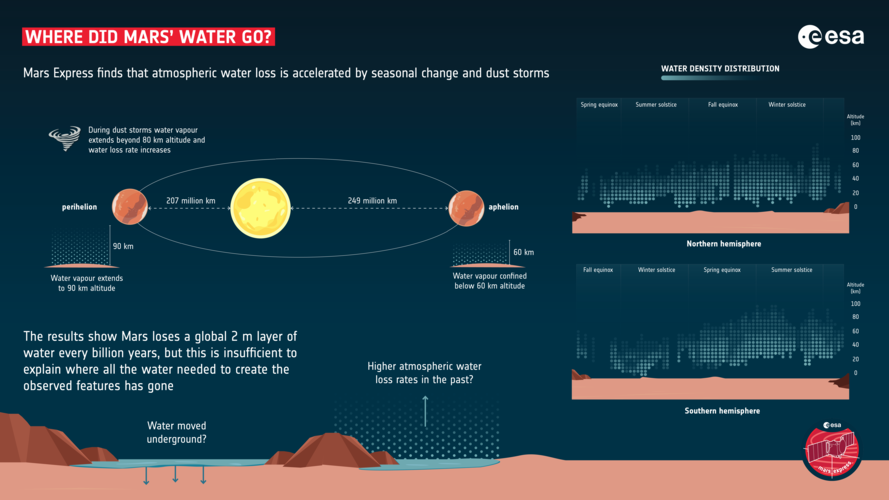ESA’s Mars Express finds that atmospheric water loss is accelerated by seasonal change and dust storms.
Across a full orbit, the distance between the Sun and Mars ranges from 207 million to 249 million km. The results found that water vapour remained confined to below 60 km when Mars was far from the Sun but extended up to 90 km in altitude when Mars was closest to the Sun. The atmosphere also has a greater water density during southern hemisphere summer, enhanced by the planet’s closer proximity to the Sun. Furthermore, in years when Mars experienced a global dust storm the upper atmosphere became even wetter, accumulating water in excess at altitudes of over 80 km (the global dust storm data is not shown in the graph).
The study finds that Mars loses a global 2 m layer of water every billion years, but this is insufficient to explain where all the water needed to create the observed water-carved features on the planet has gone. The results suggest that either this water has moved underground, or that atmospheric water escape rates were far higher in the past.



 Image:
Where did Mars’ water go?
Image:
Where did Mars’ water go?